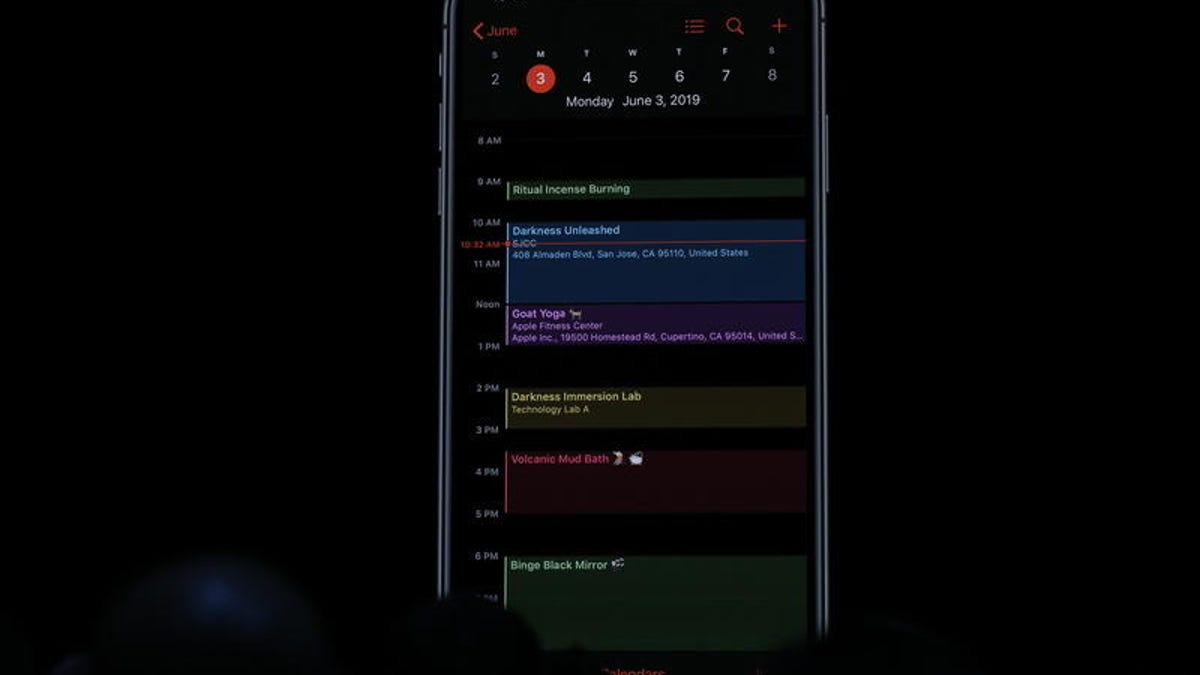Why you should use dark mode on the iPhone
This feature has only been available on MacBooks, but soon you can use it on your iPhone, too. Here's why you should.

Dark Mode in the calendar app
Apple announced at WWDC 2019 that it is bringing Dark Mode to iOS to give anyone with an iPhone the chance to use the alternative color scheme. Until this year, Dark Mode was only available with MacOS on Mac computers.
The new feature is currently in Apple's beta iOS and should be available with iOS 13, which will come out with the newest iPhone in September.
What is dark mode?
Like its name implies, dark mode darkens the user interface on Apple devices. Basically, the appearance is inverted so that instead of black text on a white background, you see light or white text on a black background.
The feature is system-wide, so all native Apple apps will support dark mode, and so will your notifications and widgets. Plus, Dark Mode will be available for third-party developers to make it part of their app. The effect is most noticeable on apps where the majority appears white, such as Apple Health and Calendar.
Read more: Dark mode is coming to iOS 13, but these iPhone apps have it now
The benefits of dark mode
Apple introduced dark mode for Mac in 2018. At the time, creative professionals raved about the feature, as it's sleek and makes photos and text pop on the black background.
But aside from creative potential, the obvious benefit is that dark mode helps protects your eyes from the traditionally blinding whiteness of computer and phone screens.
Even with features like Night Shift, which softens harsh blue light and wearing blue-light blocking glasses, bright white tech screens can still cause blurry vision, headaches and watery eyes.
For many, dark mode may alleviate those symptoms. Reducing the amount of blue light you come into contact with throughout the day may also help you sleep better.
Additionally, dark mode for iOS might increase your iPhone's battery life. It takes less power for OLED screens to emit dark colors than a bright ones, so while Apple hasn't yet made any claims that Dark Mode saves battery, there's a good chance that it will give you more time before you need to plug in again.
However, this is only true for OLED screens (organic light-emitting diode) and not LCD (liquid crystal display) screens. In OLED screens, every individual pixel lights up to create an image. So when you turn on Dark Mode, your phone just shuts off the pixels it doesn't need -- versus an LCD screen, which uses a backlight regardless of color scheme.
Only the newest iPhones use OLED, so this trick won't work for you if you use any model from the 8 Plus or earlier. More iPhones with OLED screens are expected to come out next year.
Are there any negatives?
Not that we know of -- not any real health consequences, anyway. A few potential downsides to inverted color schemes include:
- Very small text and long blocks of text may be harder to read
- People with certain kinds of color blindness may find it harder to use
- May be hard to see in dimly lit environments
Should you use it?
If you look at your phone screen for a substantial amount of time each day, there's a chance you could benefit from using dark mode. For the best results, try enabling Dark Mode and Night Shift (Settings > Display & Brightness > Night Shift) to reduce as much blue light as possible.
There are no real consequences from using Dark Mode, but a few great benefits to consider, so when Apple rolls it out for iPhone in September, give it a shot and note any differences in your vision, sleep or headaches.

